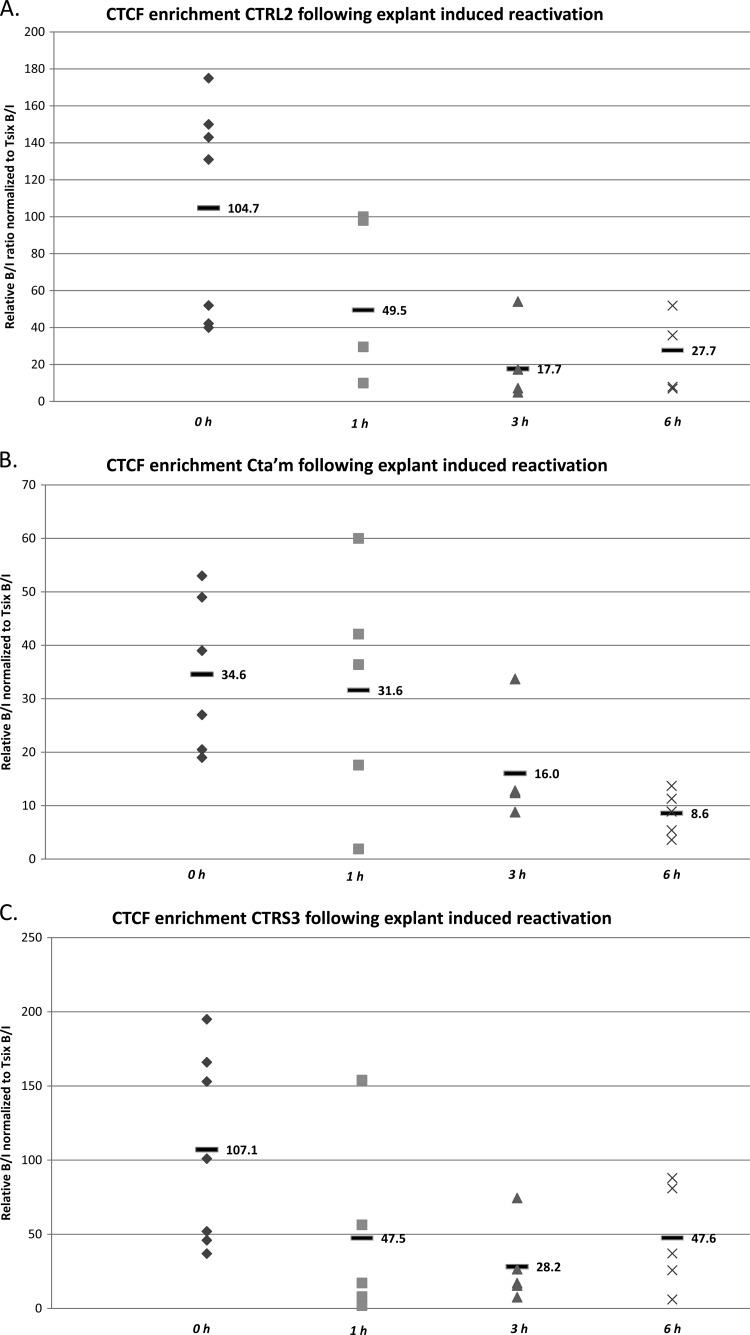Fig 6.
CTCF occupation following explant-induced reactivation of HSV-1 in mouse TG. Mice latently infected with HSV-1 17Syn+ were subjected to explant-induced HSV-1 reactivation for 1 h, 3 h, and 6 h by placing TG in supplemented medium and incubating each sample at 37°C with 5% CO2 for either 1, 3, or 6 h. ChIP assays using anti-CTCF were combined with real-time PCR analyses to compare explanted TG to TG from latently infected mice. All ChIP assays contained 3 mice (6 TG) pooled, and ChIPs postexplant were repeated 5 times (n = 5). All ratios reported are normalized to the B/I ratios of the host control Tsix imprinting/choice center CTCF site A for that experiment. The time following explant is represented on the x axis. The horizontal bars in the figures represent the averages of the individual normalized ratios from ChIP for each time point. (A) CTCF occupation of the CTRL2 domain following explant is significantly lower by 3 h postexplant than during latency (>5-fold decrease; P < 0.009). (B) CTCF enrichment of the CTa′m domain following explant is ∼2-fold lower by 3 h postexplant (P < 0.04) and is essentially abolished by 6 h postexplant. (C) CTCF enrichment of the CTRS3 domain following explant is significantly lower by 3 h postexplant (∼4-fold; P < 0.02). These data are similar to what was observed over 6 h following NaB-induced HSV-1 reactivation of latently infected mice.

